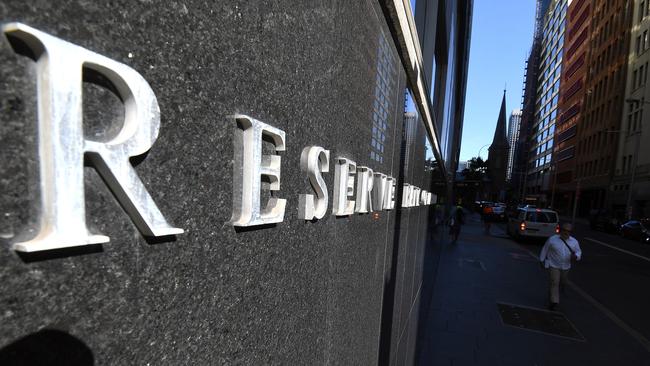Negative rates on the corporate radar despite Reserve Bank claims they’re ‘unlikely’
Negative interest rates are a “first-order issue” issue in corporate Australia.

Negative interest rates are a “first-order issue” issue in corporate Australia, even with Reserve Bank governor Philip Lowe reaffirming this week that a cash rate below zero is “extraordinarily unlikely”.
“We’re that close to the (zero) line, so it’s on the radar; you have to plan for contingencies,” John Elias, leader of national law firm Minter Ellison’s debt capital markets practice, says.
“It’s now a first-order issue for corporate treasury teams.”
With the cash rate hovering at a record low of 0.25 per cent, Lowe told a regulators’ webinar hosted by FINSIA on Thursday that the RBA board was not contemplating negative rates because “the cost of that exceeds the benefits”.
He repeated his “extraordinarily unlikely” assessment, first made last October.
Since then, COVID-19 and economic lockdowns have gone global, with central banks aggressively lowering policy rates close to zero and governments rolling out massive stimulus programs.
Bank of England governor Andrew Bailey told MPs on Wednesday that negative rates were under review and it would be “foolish” to rule out cutting the cost of borrowing to below zero.
The comment was a significant shift from only last week, when the governor said the BoE was not “planning or contemplating” the radical move.
It also came after Britain sold a government bond with a negative yield for the first time. The Reserve Bank of New Zealand is actively considering a negative policy rate, saying last week it will “become an option in the future”.
Leaving aside official rates, Australian companies are preparing for scenarios where base rates in their loan agreements turn negative, even if the cash rate is positive.
While base rates have turned negative in some overseas markets, it’s more common when the relevant policy rate is also negative.
The Weekend Australian reported earlier this week that some banks are scrambling to prepare for negative rates, notifying select business customers of a change in their loan documents.
In doing so, the banks have said that if a specific reference or base rate falls to less than zero, the rate “will be taken to be zero”.
This helps to preserve the bank’s profit margin, which is equivalent to the premium above the base rate.
Without the new clause, the profit margin would be eroded.
Elias, who acts for borrowers and lenders, says there are only a limited number of borrowers with the bargaining power to resist the inclusion of the clause.
“But understanding the risk borne under the facility agreement is only half the issue — most corporates will also have interest rate swaps in place to hedge the risk of changes to interest rates, and it is these arrangements which may well contain hidden dangers,” he says.
“This is of course a fundamental issue for corporates as, by definition, the intention of the swap should be to hedge the risk of interest rate movements.
“So to end up in a position where such a transaction actually adds additional risk is highly problematic.”
It’s long been thought that, even if Australia were to experience negative rates, the aggregate of the base rate and the margin would remain positive.
However, the unthinkable is now seen as possible, where the aggregate of the base rate and the margin could itself be negative.
While this would require the lender, on the face of it, to pay for the privilege of lending, Elias says the interest obligations under most facility agreements are expressed solely as an obligation on the borrower to pay.
The nightmare scenario for the borrower arises when there’s a mismatch between the way in which the facility agreement and the related derivative arrangements deal with negative rates.
An example would be inclusion of a “zero floor” term in the facility agreement, but no assumption of zero as the base rate in the swap.
Elias says most borrowers will be in this situation: only strong borrowers will have been able to negotiate a different position.
“This leaves the borrower with two adverse results,” he says.
“It does not get the benefit of the negative base rate in the loan, which would otherwise reduce the interest rate to below the margin, but it is still required to make payment of an amount equal to the negative base rate under the swap.
“In short, beware the double negative!”
The companies most vulnerable to the double negative, according to Elias, are those which have only recently started to use hedging through interest rate swaps.
They are usually fast-growing companies new to hedging but lacking the experienced treasury teams.
“Sophisticated corporate treasurers are across all this,” Elias says.
“Inexperienced people think they’re safe with hedging but they can actually end up in a worse position, and if the deal was struck two to three years ago there’s little they can do until it’s time to roll it over.
“Even then, borrowers don’t have much negotiating power.”







To join the conversation, please log in. Don't have an account? Register
Join the conversation, you are commenting as Logout